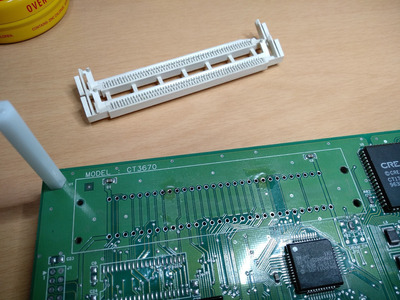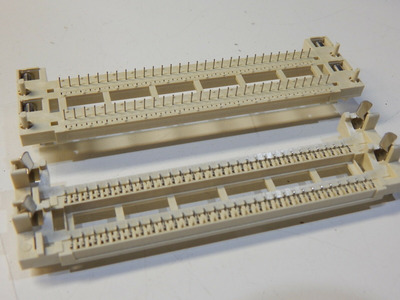First post, by brownk
- Rank
- Member
So, on a sunny, bright Sunday afternoon, I decided to dodge the bullet and tried to replace a horribly broken CT3670 ram socket with AMP 822113-2.
After wielding desoldering pump for a while, I managed to suck up pretty much every hole in the back. I could see white plastic stub on the other side of PCB through the holes.
Nevertheless, those three holes in white circles are absolutely stubborn to a point that solder in the hole does not give up, like at all.
I armed myself with plenty of youtube soldering master courses, and they all taught me excessive amount of hot massage would destroy my beautiful card.
Perhaps, I was a bit more on the conservative side, and didn't apply enough heat to remove them. Well, I'd rather want to be slow than sorry.
For those who have experience in replacing the socket, I'd like to ask. "how do I remove the remaining solder completely?"
* It seems the holes are so-called "plated through-holes" as they are noticeably difficult to clean up.


